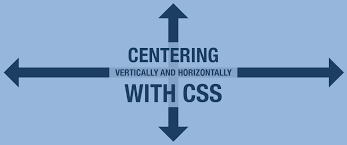Centering elements on a webpage is a fundamental task in web design, especially for creating balanced, user-friendly layouts. One of the most common challenges designers and developers face is horizontally centering a div element. While CSS provides various methods for fsiblog centering, the best approach can depend on your layout requirements, the element type, and its surrounding content.
In this guide, we’ll explore multiple techniques to horizontally center a div using CSS, covering both classic and modern methods. Whether you’re new to CSS or looking to polish your centering skills, this guide has got you covered.
1. Using margin: auto
The simplest way to center a block-level element like a div is to set its margin to auto. This method works best when the div has a defined width.
Code Example
Explanation
Setting margin: 0 auto; applies automatic left and right margins, centering the div within its container. However, this only works if the div has a specified width, so the browser knows how much space to center around it.
Pros and Cons
- Pros: Simple, widely supported, and effective for fixed-width elements.
- Cons: Requires a fixed width on the
divand does not work for elements with flexible widths.
2. Using text-align: center on the Parent Container
If your div is an inline-block element, you can center it by applying text-align: center; to its parent container.
Code Example
Explanation
By setting display: inline-block; on the div, it behaves like an inline element. Then, by applying text-align: center; to the parent, the div aligns to the center of the parent container.
Pros and Cons
- Pros: Simple and doesn’t require a fixed width.
- Cons: Only works for elements styled with
display: inline-block;orinline.
3. Using Flexbox
Flexbox is a modern and powerful way to align elements. By setting the parent container as a flex container, you can use justify-content: center; to horizontally center any child element, including a div.
Code Example
Explanation
When the parent container is set to display: flex;, you can center its children by using justify-content: center;, which aligns items horizontally in the center of the container.
Pros and Cons
- Pros: Flexible and doesn’t require a fixed width on the child element.
- Cons: Limited browser support on older versions (although now widely supported).
4. Using CSS Grid
CSS Grid is another modern approach that provides even greater layout control. To center a div, you can set the parent container as a grid and use place-items: center;.
Code Example
Explanation
When the parent container is set to display: grid;, place-items: center; will center the child element both horizontally and vertically. For only horizontal centering, you can use justify-items: center;.
Pros and Cons
- Pros: Powerful and flexible; can center multiple items.
- Cons: Limited browser support on very old browsers (mostly compatible today).
5. Using Absolute Positioning and Transform
Another method to center a div horizontally is to use position: absolute; and transform it by 50% of its width. This approach works even if the parent container has a fixed width.
Code Example
Explanation
By setting the div to position: absolute; and moving it 50% from the left, the transform: translateX(-50%); centers the element back by half of its width, achieving horizontal centering.
Pros and Cons
- Pros: Works well for elements that need fixed positioning.
- Cons: Requires
position: relative;on the parent and may require a defined width.
6. Using margin: 0 auto with display: table
Another classic method for centering a div horizontally is to set its display property to table, then apply margin: 0 auto;.
Code Example
Explanation
When an element’s display is set to table, margin: auto; can be used to center it, similar to how it works with block-level elements.
Pros and Cons
- Pros: Simple and effective.
- Cons: Unintuitive; may not work well with more complex layouts.
7. Centering a Full-Screen div
To center a div that should take up the full viewport width, you can use a combination of flexbox and viewport height units.
Code Example
Explanation
Here, we set the height to 100vh (viewport height) and use both justify-content: center; and align-items: center; to center the div horizontally and vertically, creating a full-screen centered element.
Pros and Cons
- Pros: Excellent for splash screens, landing pages, or full-page modals.
- Cons: Limited to elements that should fill the entire screen height.
Choosing the Best Method
With so many options for centering a div horizontally, which should you choose? Here are a few tips:
- For Fixed Width Elements: Use
margin: auto;with a fixed width. - For Inline-Block Elements: Use
text-align: center;on the parent container. - For Flexible Layouts: Use Flexbox (
display: flex;) for responsive layouts. - For Complex Layouts: CSS Grid is highly recommended for complex, multi-element layouts.
- For Fixed Positioning Needs: Use absolute positioning with
transform: translateX(-50%);.
Conclusion
Centering a div horizontally in CSS has multiple solutions, each suitable for different scenarios. Whether you’re working on a simple or complex layout, understanding these methods will help you choose the right approach and create well-centered designs. By mastering these centering techniques, you can create more visually appealing, balanced, and user-friendly layouts in your web projects.

